How to Make Concrete Molds (DIY Concrete Paver Mold Ideas) (original) (raw)
Making DIY concrete molds is a fantastic method to add a personal touch to your home or garden. With a bit of creativity and some simple tools, you can make unique pavers and decorations that showcase your style. This guide will walk you through everything from preparing your space to mixing and pouring concrete, ensuring you have all the information you need.
Understanding the basics of choosing the right concrete and mold is crucial for your project's success. We'll also share valuable tips and highlight potential challenges to keep you on track. By the end of this, you'll be more than ready to tackle your DIY concrete paver mold project. So, let's get your hands dirty and transform your outdoor space with custom concrete masterpieces.
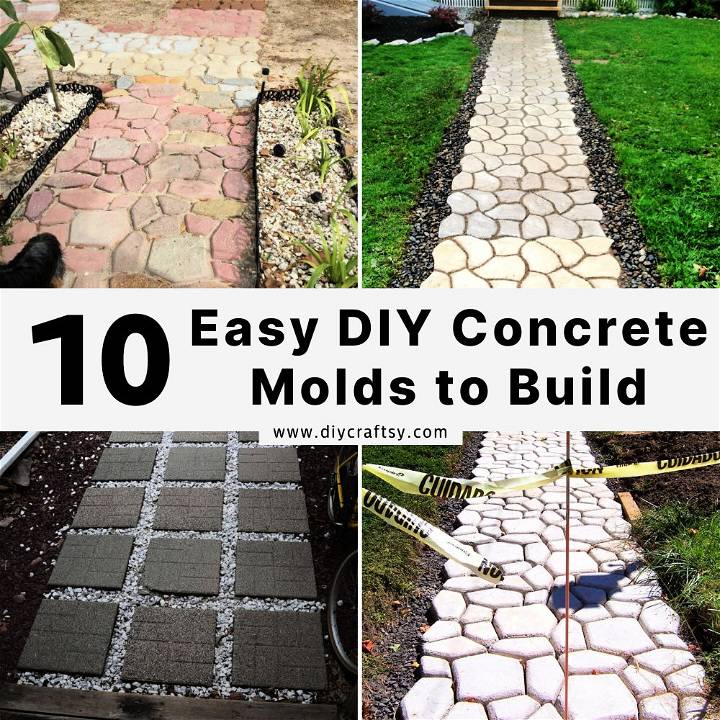
Why Opt for DIY Concrete Molds?
Choosing to make your own concrete molds for projects like walkways, patios, or stepping stones offers numerous benefits. Let's explore why taking the DIY route can be advantageous:
- Cost-Effective: Save Money on your landscaping or garden projects. Purchasing ready-made concrete pavers or hiring professionals can be expensive. By making your molds, you control the budget, often resulting in significant savings.
- Customization: Personalize Your Space with unique designs and shapes that reflect your style. Unlike off-the-shelf options, DIY molds allow for endless creativity, ensuring your outdoor space is truly one-of-a-kind.
- Skill Building: Learn New Skills and gain a sense of accomplishment. The process of making concrete molds and using them for various projects enhances your DIY abilities and can be a rewarding experience.
- Flexibility: Work on Your Schedule without waiting on professional availability. DIY projects can be done at your own pace, fitting perfectly into busy lifestyles or specific timelines.
- Eco-Friendly: Reduce Waste by repurposing materials for molds and mixing only the amount of concrete needed. This approach minimizes excess and promotes a more sustainable way of enhancing your outdoor areas.
- Fun and Engaging: Enjoy the Process as a solo project or as a collaborative activity with friends or family. DIY projects offer a chance to bond and share experiences, adding an extra layer of enjoyment to the task at hand.
Embracing DIY concrete molds can transform your outdoor space while offering personal satisfaction and practical benefits. With a little effort, you can achieve professional-looking results that enhance the beauty and functionality of your home.
How to Make a Paver Walkway from Concrete and a Mold
Making a paver walkway can enhance the aesthetic and value of your outdoor space. This guide will walk you through the steps to make a beautiful paver pathway using concrete and molds, even if you've never done it before. The process is straightforward and rewarding, perfect for a weekend DIY project.
Preparing the Area
- Clear the Area: Begin by removing any organic material from the pathway area. If installing within a grassy plot, cut and remove the top layer of turf to a depth of a few inches to accommodate the base and pavers.
- Lay the Base: Spread a layer of pea gravel for the base. This helps with drainage and provides a stable foundation for the pavers. Ensure the base is level and compact it firmly.
Choosing the Right Concrete and Mold
- Select Your Mold: There are various molds available online featuring different patterns. Choose one that suits your aesthetic preference. Some molds can be rotated to make varying patterns, giving you creative freedom over the design.
- Pick the Right Concrete: Opt for high-strength, quick-setting concrete suitable for mold use. This type sets quicker than regular concrete but not so fast that you can't work it into the mold properly. A medium-setting concrete like Quikrete 6000 is ideal as it sets hard enough to remove the mold in 10-15 minutes while retaining its shape.
Mixing and Pouring Concrete
- Mix the Concrete: In a large tub, mix the concrete with water until it reaches a thick oatmeal-like consistency. Add water incrementally to avoid making it too liquid.
- Prepare the Mold: Wet the mold and the base lightly. This prevents the concrete from sticking to the mold and encourages it to bond with the gravel underneath.
- Fill the Mold: Scoop the concrete mixture into the mold, overfilling it slightly. Use a trowel to move the mix into corners and eliminate air pockets. Level the concrete flush with the top of the mold.
- Remove the Mold: After waiting the necessary time, lift the mold vertically to avoid distorting the shape. If using multiple molds, you can move on to the next section immediately, reusing the mold without significant downtime.
Finishing Touches
- Cure and Hydrate: After the concrete has set, lightly water the pavers to assist the curing process. Be gentle as the pavers will still be somewhat soft.
- Fill the Gaps: Depending on the location and desired look, fill the gaps between pavers with sand or topsoil. For patios, consider using polymeric sand, which hardens and helps prevent the pavers from shifting.
Tips for Success
- Keep tools and the mold clean to ensure a smooth release and prevent sticking.
- If your pavers are not coming out as planned, check the consistency of your mix and the condition of your mold.
- Adjust gaps between pavers according to your design preferences.
Potential Challenges
- The last paver can be tricky. Ensure the mold is clean and free of residual concrete to avoid it sticking.
- Regular hydration and filling gaps will help the pavers settle and interlock over time, enhancing the stability and appearance of your walkway.
Video Tutorial
For a step-by-step video tutorial on crafting a concrete paver walkway using a mold, watch this YouTube video by JessedoesDIY.
It pairs well with this written guide, offering a visual complement to the techniques discussed, allowing you to see the process in action for a clearer understanding.
Whether you're an experienced DIY enthusiast or a novice, making a concrete paver walkway with a mold is a rewarding project that can significantly enhance your outdoor living space.
Making DIY concrete molds for your home or garden projects can be both fun and fulfilling. Here, we've compiled a list of frequently asked questions to help you get started on your DIY journey confidently.
What materials do I need to make a concrete mold?
To make a concrete mold, you typically need:
- A model or shape to base your mold on (this can be anything from a simple plastic container to a detailed sculpture)
- A molding material such as silicone, latex, or a DIY mix (often sand and plaster)
- Release agent to prevent the concrete from sticking to the mold (common household items like cooking spray can work)
- Concrete mix
- Water
- Mixing tools (like a bucket and a stir stick)
- Protective gear (gloves, mask)
How do I choose the right concrete mix for my project?
Select a concrete mix based on the project's requirements. For most DIY molds and pavers, a high-strength, quick-setting concrete mix is ideal. It sets quickly enough to allow for rapid demolding but not so fast that you can't work with it properly. Look for mixes labeled for outdoor use and durability, such as Quikrete 5000 or a similar product.
Can I reuse a DIY concrete mold?
Yes, many DIY concrete molds, especially those made from durable materials like silicone or thick plastic, can be reused. The key to longevity is proper cleaning and storage. After demolding your concrete, clean the mold with soapy water, rinse, and let it dry completely before storing it away from direct sunlight and extreme temperatures.
How long does it take for concrete in a DIY mold to dry?
Drying times can vary based on the concrete mix used, mold thickness, and environmental conditions. Generally, you should wait at least 24 hours before demolding to ensure the concrete has set properly. For complete curing, it might take up to 28 days. Always refer to the instructions on your specific concrete mix for guidance.
What are some creative ideas for DIY concrete molds?
DIY concrete molds can be used to make a variety of unique and practical items, such as:
- Pavers and stepping stones with personalized designs
- Garden ornaments like statues or decorative edging
- Home decor items, including candle holders, coasters, and planters
- Functional pieces like benches, tabletops, or even sinks
Remember, your imagination is the limit when it comes to making with concrete.
How can I prevent air bubbles in my concrete mold?
To minimize air bubbles:
- Tap the sides of the mold gently after pouring the concrete to help any trapped air rise to the surface.
- Use a tool to poke into the concrete gently or swirl it around in the mold to release air pockets.
- Consider using a concrete vibrator for larger projects, which helps to evenly distribute the mix and release air bubbles.
What safety precautions should I take when working with concrete?
Working with concrete requires some basic safety measures to protect your health:
- Always wear protective gear, including gloves, eye protection, and a dust mask when mixing concrete to avoid skin irritation and inhaling dust.
- Work in a well-ventilated area, especially when mixing dry concrete.
- Keep a first aid kit handy in case of accidental scrapes or cuts.
- Read and follow all instructions and safety warnings on your concrete mix and molding materials.
By keeping these FAQs in mind, you'll be well on your way to successfully completing your DIY concrete mold projects with confidence and creativity.
How to Make Concrete Molds (DIY Concrete Paver Mold Ideas)
Learn how to make concrete molds with these DIY concrete paver mold ideas. Make unique designs for your home or garden projects easily.
1. DIY Walkway with a Concrete Mold
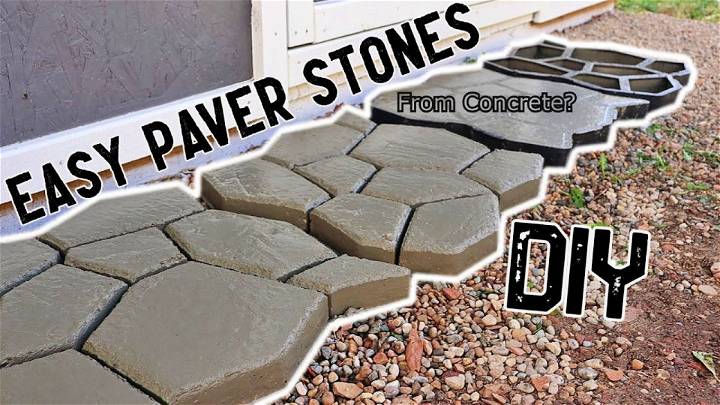
Discover the transformative power of DIY concrete paver walkways using simple molds for an efficient, cost-effective path to enhancing your outdoor space. This guide illuminates the process, from selecting the ideal mold with varying patterns to preparing your site and mixing the perfect concrete consistency.
Learn to make durable, attractive walkways without the complexity of traditional pavers. With tips on achieving the right mix, mold usage, and finishing touches, including sand filling for stability, you'll craft a custom look that elevates your landscape. Perfect for any homeowner eager to add charm and functionality to their yard with minimal downtime and expense.
2. Concrete Walkway Molds for Patio
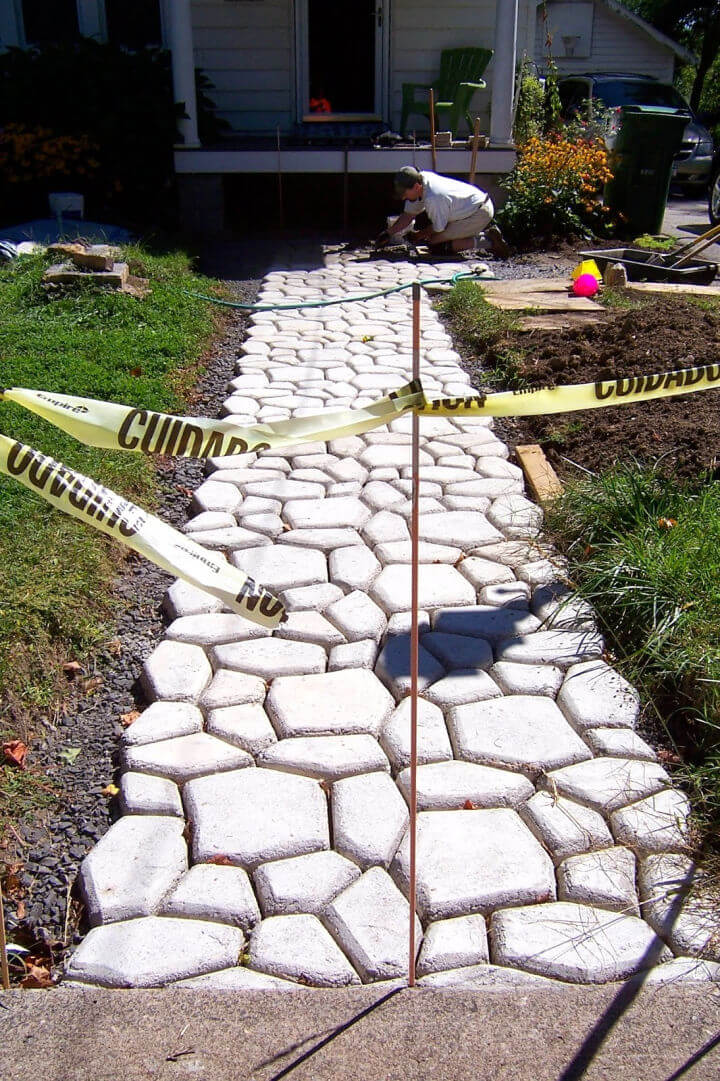
Find the simplicity and satisfaction of making your own concrete walkway with this step-by-step guide. Utilizing a walk maker form and Quikrete 5000, this tutorial makes it easy to achieve a professional-looking pathway. Begin by preparing the site, then lay down a base of 3/4 inch gravel.
The clever design of the walk-maker form allows for a natural stone appearance with each turn, ensuring a unique finish every time. Mix and pour the concrete, ensuring thorough coverage in the mold. Smooth or texture the surface as desired. Regularly mist the curing concrete to prevent cracks. This DIY project not only enhances outdoor spaces but also offers a durable, cost-effective solution for walkways or patios.
3. DIY Concrete Stepping Stone Mold
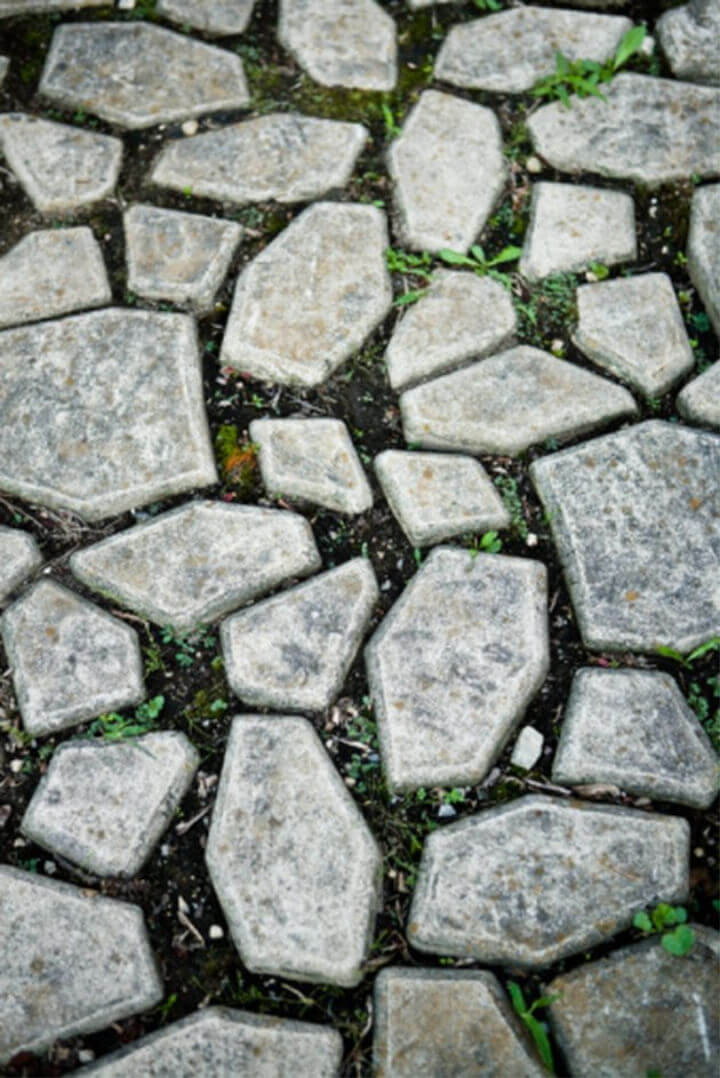
Making your own concrete stepping stones is a rewarding DIY project that can enhance your garden while saving money. HomeSteady provides a comprehensive guide on how to craft durable molds for concrete stepping stones using household items.
From selecting the perfect shape to mixing the ideal concrete blend, this guide ensures that your handiwork will result in beautiful and unique pavers. With tips on curing and adding personal touches, HomeSteady's instructions make it simple for anyone to add a custom touch to their outdoor space.
4. Make CNC Concrete Walkway Mold
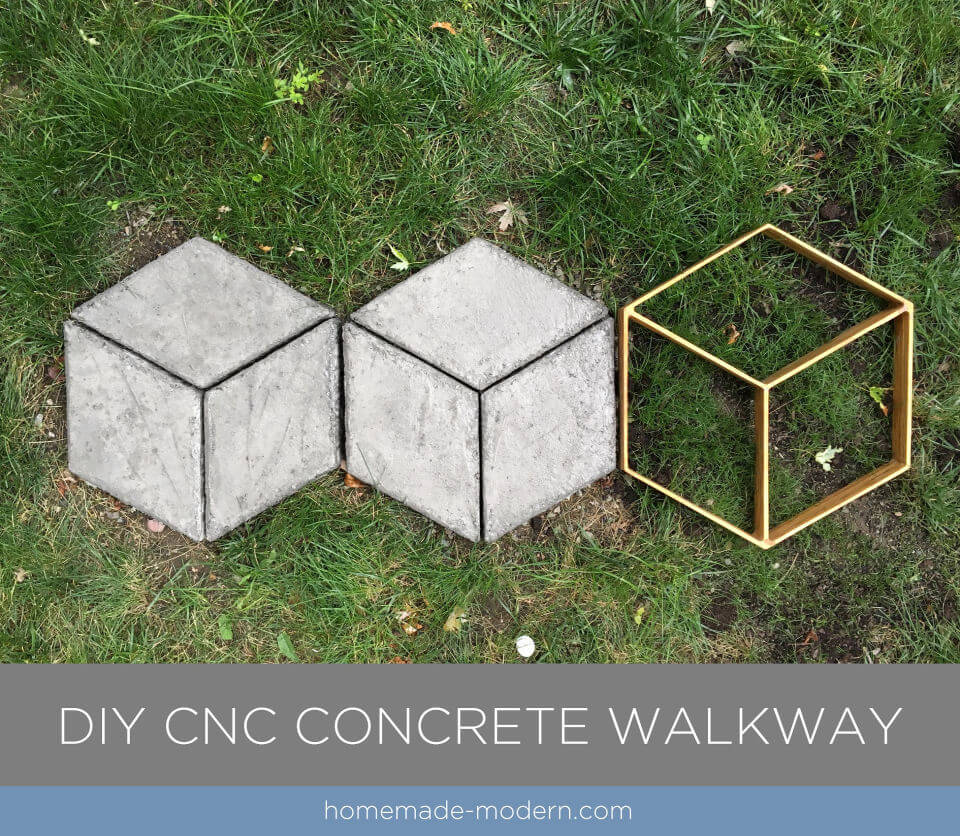
Make a custom concrete walkway with ease following the guidance from HomeMade Modern's ben Uyeda. This tutorial on crafting concrete pavers uses an x-carve cnc machine for precise and reusable plywood forms. Ideal for a weekend project, the process is simplified into manageable steps, from designing and cutting the mold pieces to mixing, pouring, and finishing the concrete.
The cost-effective method requires basic supplies like Quikrete 5000, melamine, and silicone caulk. The final product is a durable and stylish walkway that adds a personal touch to any outdoor space. Perfect for DIY enthusiasts, the instructions are clear, engaging, and aimed at helping you achieve professional results in your own backyard.
5. Homemade Concrete Stepping Stone Walkway
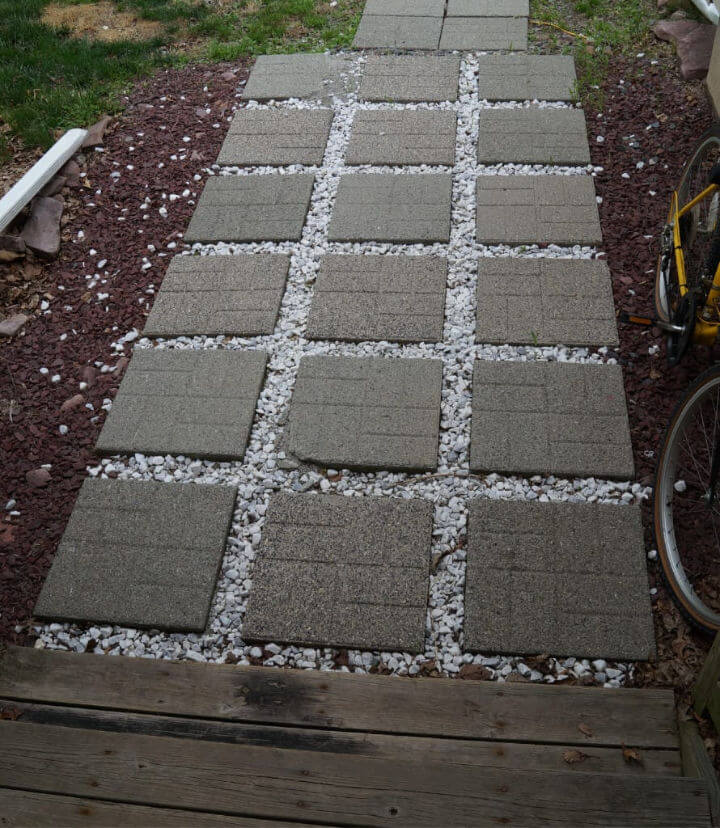
Constructing a rubber mold for concrete stepping stones is a straightforward process that allows for custom designs and patterns in your garden walkway. The Polytek Development Corp. tutorial guides you through replicating a stepping stone using liquid polyurethane rubber and common tools.
Learn to select a model, seal it properly, calculate the amount of rubber needed, and mix and pour the rubber to form the mold. The result is a durable and reusable mold perfect for casting concrete and adding a personalized touch to your outdoor space. Follow these step-by-step instructions to make your own unique stepping stones with ease and precision.
6. Rhubarb Leaf Stepping Stone Concrete Mold
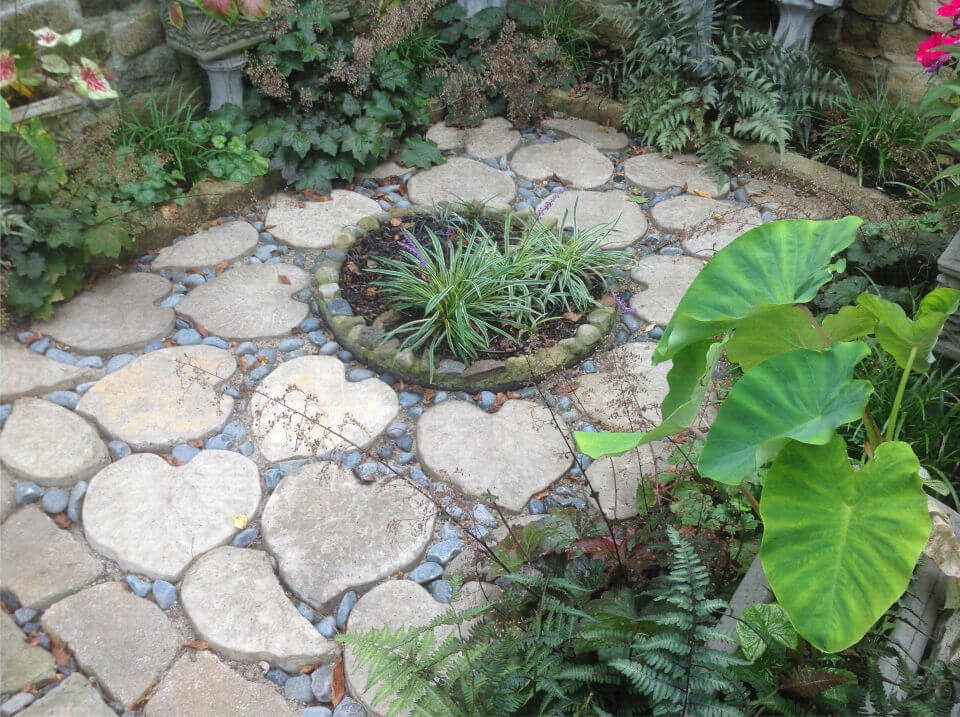
Elevate the charm of your garden with delightful and unique do-it-yourself rhubarb leaf stepping stones! Using a simple concrete mold, you can fashion a natural, leaf-patterned pathway that seamlessly integrates with your outdoor space, making a whimsical touch that enhances the overall aesthetic. This affordable and imaginative project adds a delightful and personalized element to any garden, making it a truly one-of-a-kind outdoor oasis.
7. DIY Concrete Stepping Stone Paver Mold
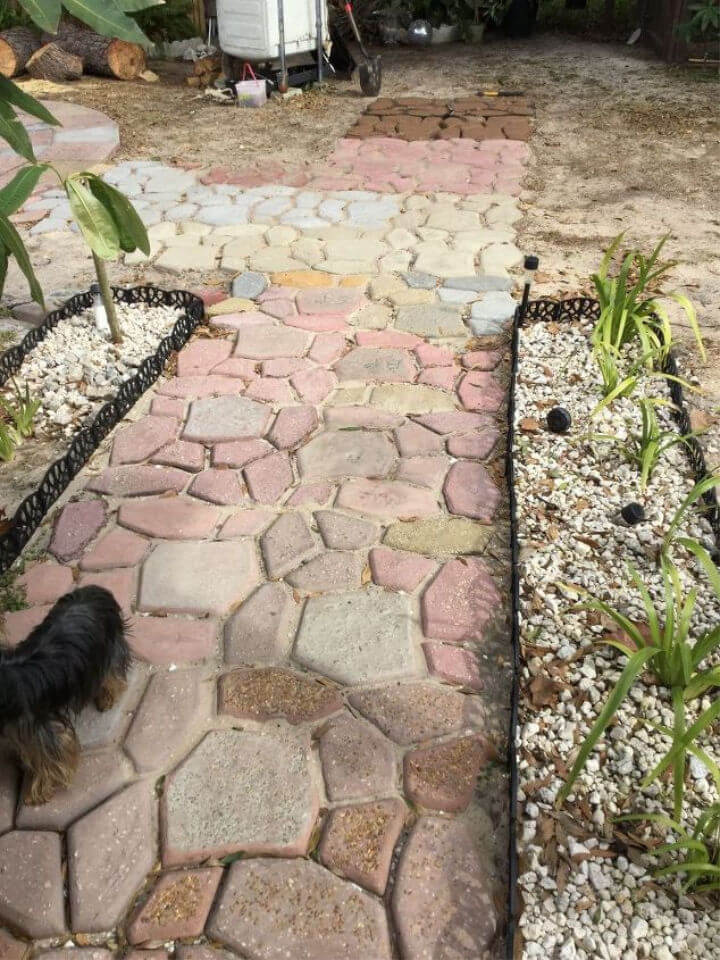
Transform your garden path into a charming feature with a DIY ice cream bucket stepping stone walkway. At Hometalk, discover how a creative couple repurposed empty ice cream buckets into a delightful walkway. By cutting the bottoms off the buckets and using them as molds for cement, they've crafted a unique and personal touch for their outdoor space.
With a bit of oil to ease the release and some cement mix, you can make a patterned path to enhance your garden's appeal. As the stones cure, the anticipation builds until you finally lay them out and add decorative touches like shells or glass. This instructive guide will help you elevate your walkway, making it a talking point for guests and a project to take pride in.
8. How to Make Concrete Walkway Mold
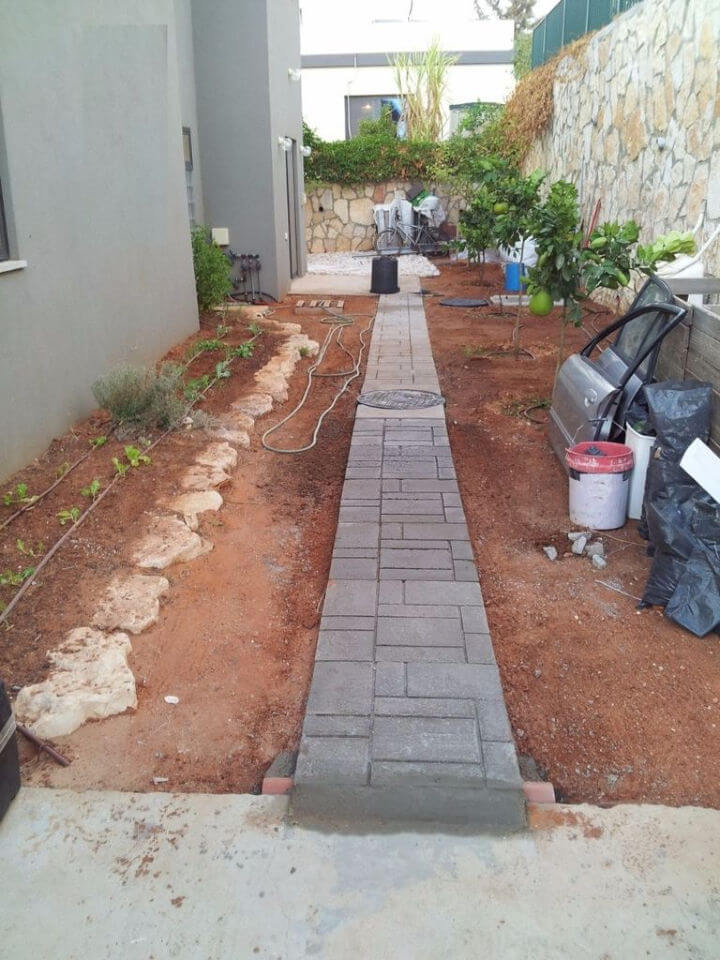
Constructing a concrete path can transform your backyard into a structured and aesthetically pleasing outdoor space. Instructables offers a detailed guide on making a durable concrete path mold, empowering you with the know-how to build a walkway that stands the test of time.
With straightforward instructions on welding the mold and mixing concrete, this tutorial is tailored for individuals eager to engage in hands-on projects. Learn to prepare the ground, pour slabs with precision, and understand the importance of curing concrete for a week to ensure maximum hardness. This step-by-step approach ensures a rewarding DIY experience, resulting in a professionally laid path in your own garden.
9. Cobblestone-Look Walkway Mold
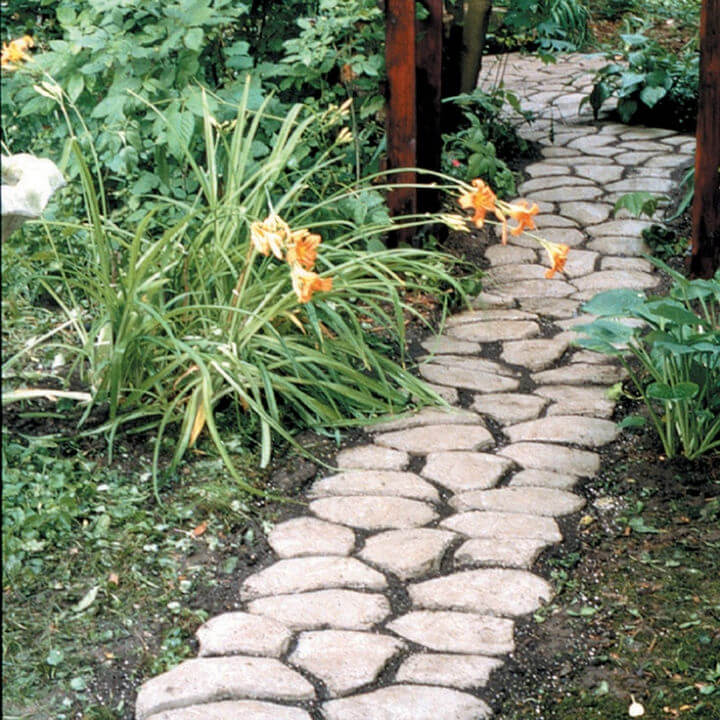
Jazz up your garden with this incredibly natural-looking walkway - the cobblestone-look walkway. Make a mold for it using steel strips or other suitable materials, and then fill it solidly with white concrete to achieve a beautiful and durable garden concrete walkway. This attractive addition will not only enhance the aesthetic appeal of your garden, but also provide a functional and long-lasting pathway for your outdoor space.
You can even consider adding some colorful pebbles or small plants along the walkway to further enhance its visual appeal and make a more inviting atmosphere in your garden. This walkway will not only serve as a functional pathway but also as a focal point for your outdoor space, adding character and charm to your garden landscape.
10. Easy Concrete Walkway Molds
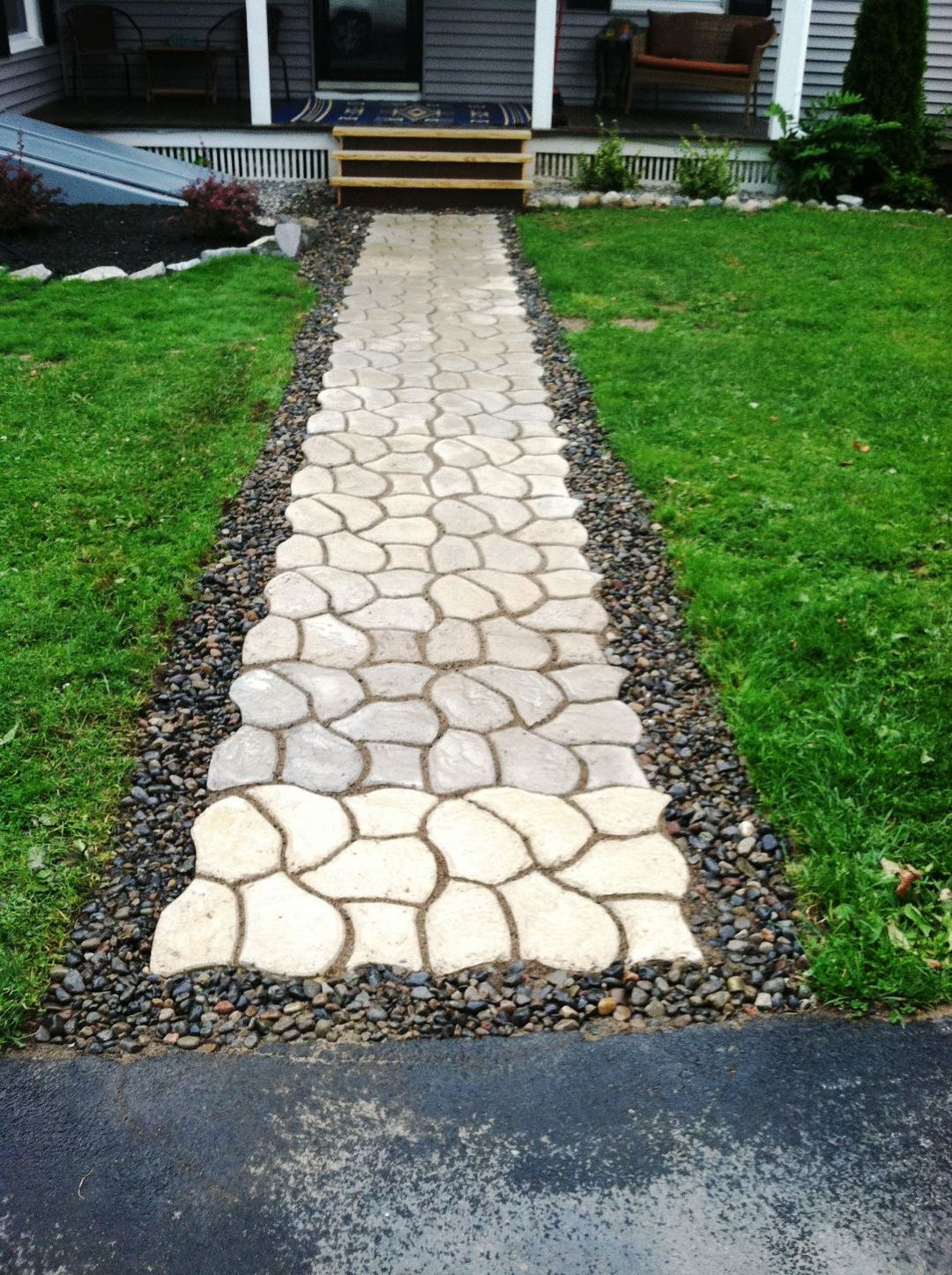
Make stunning and durable walkways in your garden with ease using our innovative DIY molds. Begin by downloading a template for the mold to simplify the process, and then delve into exploring various high-quality materials such as sturdy steel bars, resilient plastic, and natural wood to craft the perfect mold that aligns with your unique vision. This meticulous method ensures that you not only achieve a beautiful garden walkway but also one that is highly functional and long-lasting.
Related DIY Projects:
DIY Concrete Walkway: Find out how you can install a walkway with concrete that doesn't break the bank.
Simple DIY Concrete Bench: From a shabby chic style to a modern farmhouse design, there are dozens of ways to build your own concrete bench. This article will show you how to make different DIY concrete benches for your backyard - without spending a fortune.
DIY Stepping Stones: Craft a one-of-a-kind set of DIY stepping stones for your garden using broken pots, rocks, and cement.
Concrete Pendant Lights: Want to add a little rustic charm to your home? Get ready to fall in love with these easy-to-make concrete lights.
DIY Concrete Stool: DIY concrete stools are a great project for your home or garden. Find inspiration in these different DIY concrete stool ideas, then get started on your own DIY stool today!
Cheap DIY Concrete Planters: If you're looking for a great way to add color, style, and character to your outdoor space without breaking the bank, the following DIY concrete planters are a perfect solution to make your own.
DIY Concrete Slab: Learn how to pour a concrete slab. Follow these steps to build a perfect foundation for your home, garage, or shop.
DIY Concrete Countertops: Concrete countertops are durable, beautiful, and can be designed to fit any kitchen. Explore different DIY concrete countertop ideas, from the low-maintenance to the extravagant.
Conclusion:
In conclusion, mastering how to make concrete molds for DIY projects like concrete paver mold ideas can significantly uplift your outdoor space. From preparing the area, choosing materials, to applying the finishing touches, each step is vital for achieving great results. Remember, it's not just about aesthetics but also about making durable and lasting additions to your garden or walkway. Armed with the tips, ideas, and techniques outlined in this guide, you're now ready to embark on this rewarding DIY journey. Let your creativity lead the way to transform simple materials into stunning pathways.